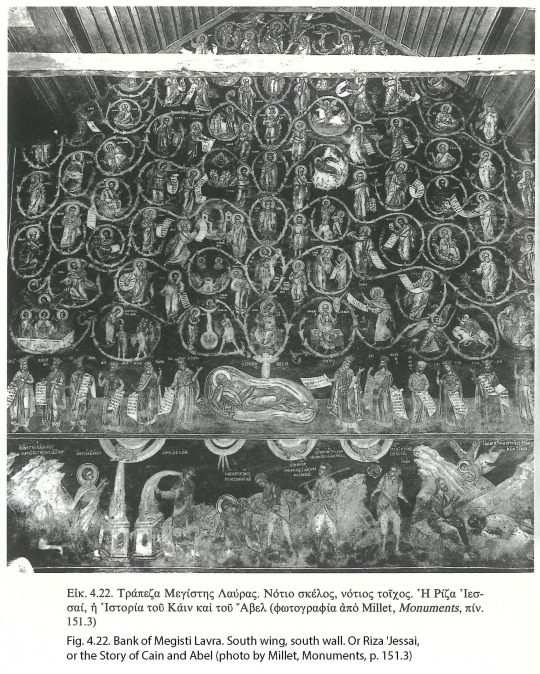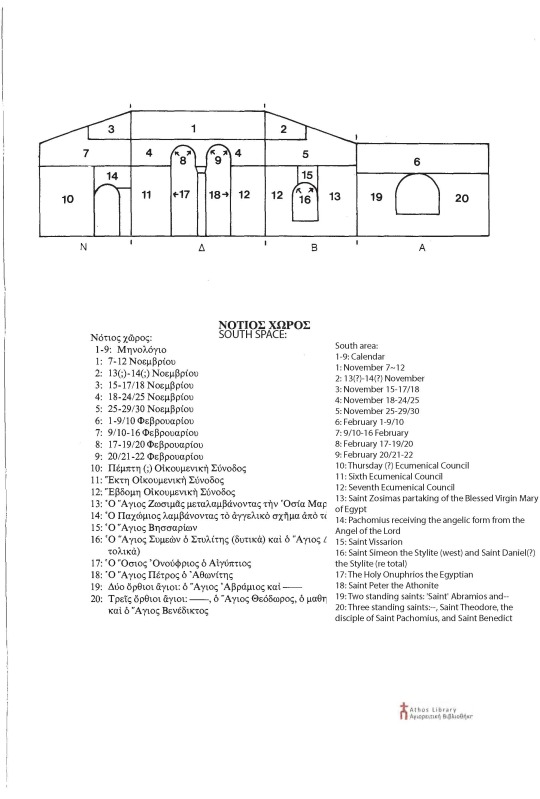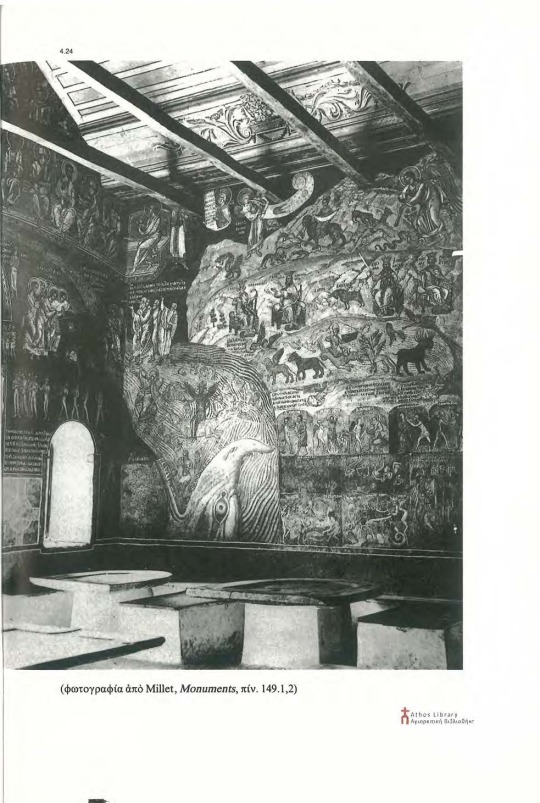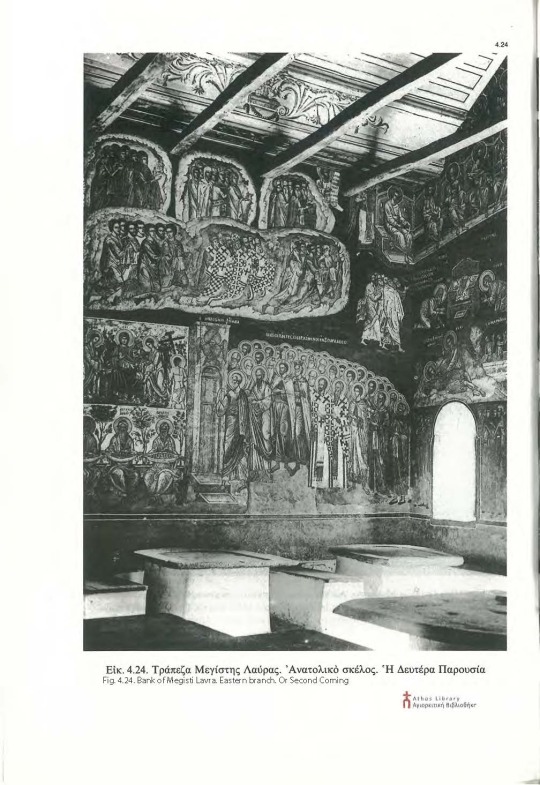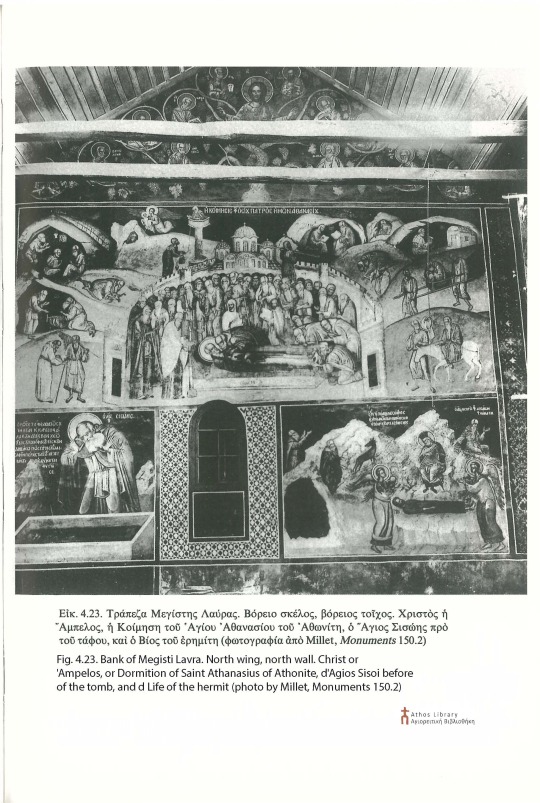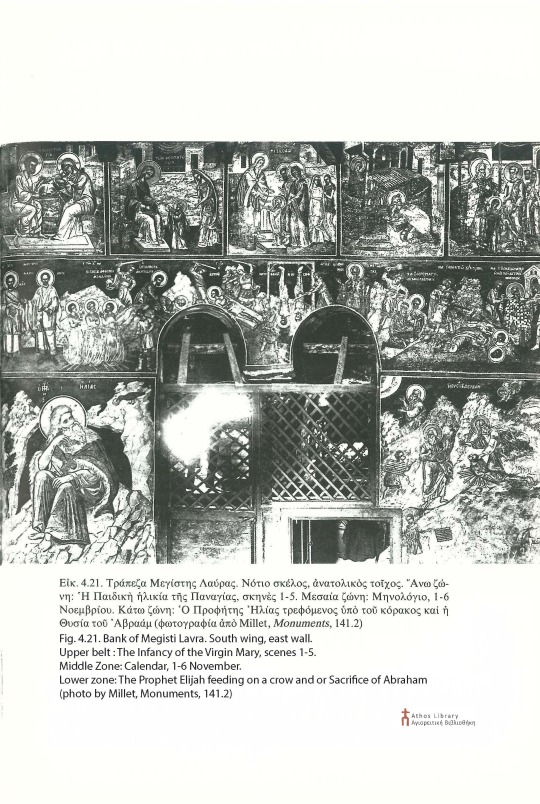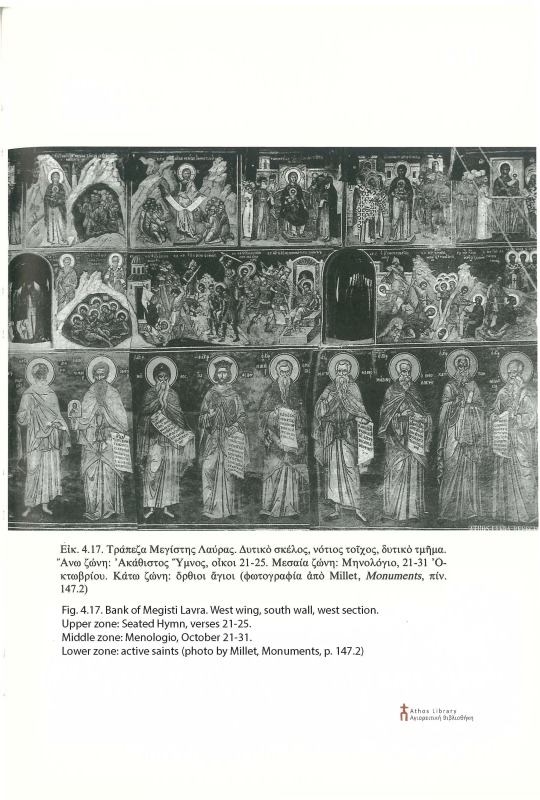#great lavra
Explore tagged Tumblr posts
Text


the faces in the lava have disappeared
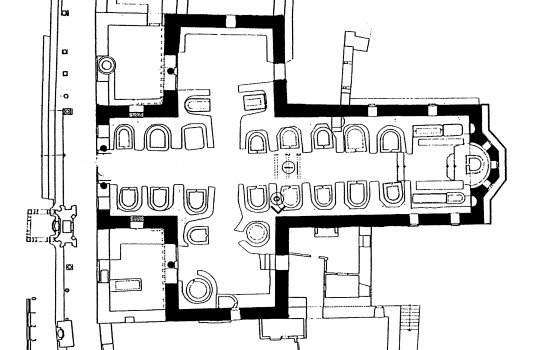

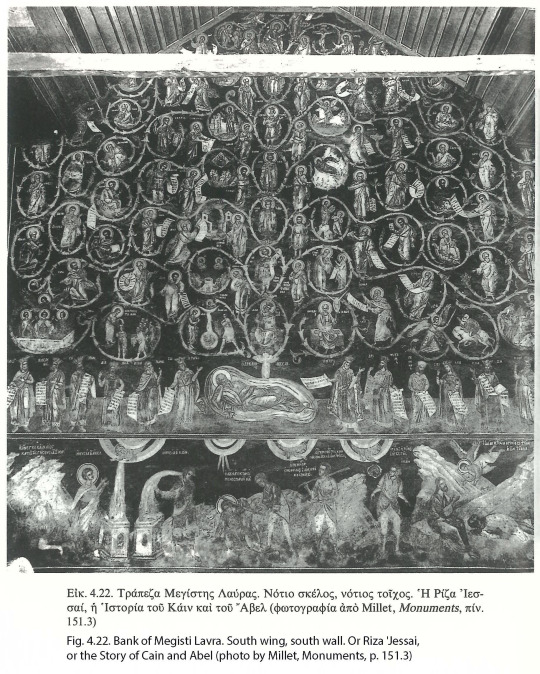
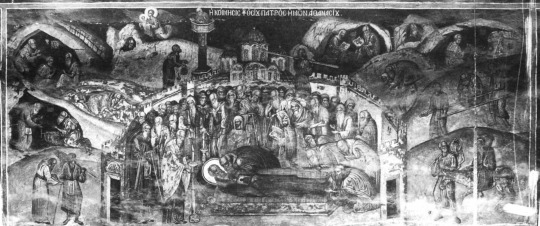


Theophane le Cretois 1512-1535
Mount Athos, (Megisti, Magistri) Great Lavra Monastery, Refectory (Trapeza)
cfr. Lewandowski Rafal, (The perfor_ΚΑΙΠΡΟΧΡΙΣΤΙΑΝΙΚΗΑΡΧΑΙΟΤΗΤΑ
Yiannias John, The hagiographies of the banks of Mount Athos images
2 notes
·
View notes
Text
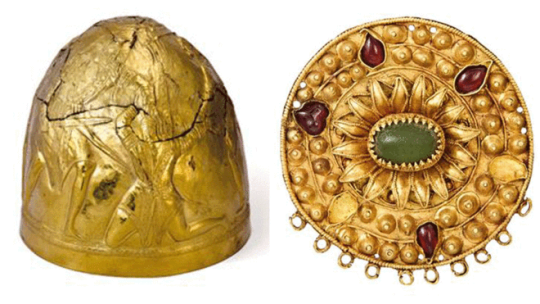
Disputed Ukrainian Treasures Returned to Kyiv After Dutch Court Ruling
A haul of Ukrainian treasures sent to Europe for an exhibition nearly 10 years ago have been returned to Kyiv from the Netherlands after a lengthy legal battle.
The collection of ancient artifacts was dispatched to the Netherlands from four museums in Crimea before Russia’s annexation of the region in 2014. But the annexation meant their return has not been straightforward.
“After almost 10 years of litigation, artifacts from four Crimean museums that were presented at the exhibition ‘Crimea: Gold and Secrets of the Black Sea’ in Amsterdam have returned to Ukraine,” the National Museum of History of Ukraine said in a statement.
The collection comprised 565 items, including antique sculptures, Scythian and Sarmatian jewelry, and Chinese lacquer boxes that are 2,000 years old, the museum said.
Rostyslav Karandieiev, Ukraine’s acting minister of culture and information policy, described the treasures’ homecoming as “our great historical victory.”
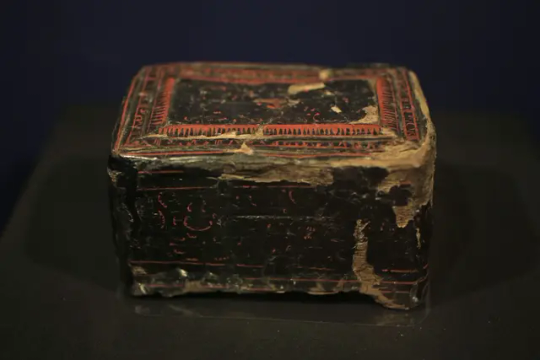
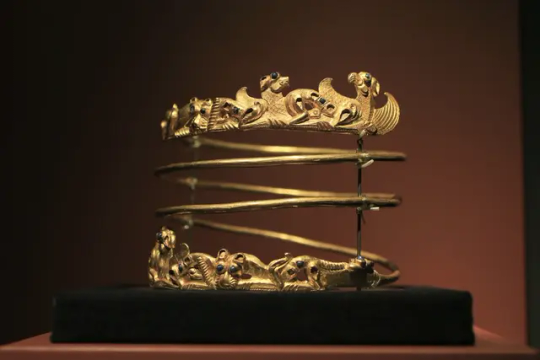

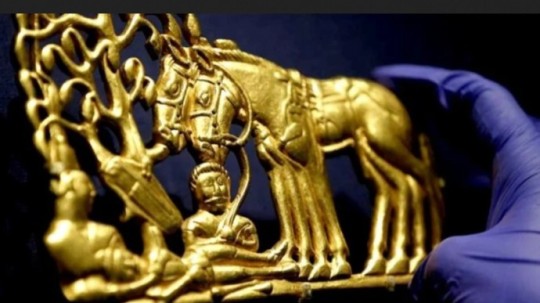
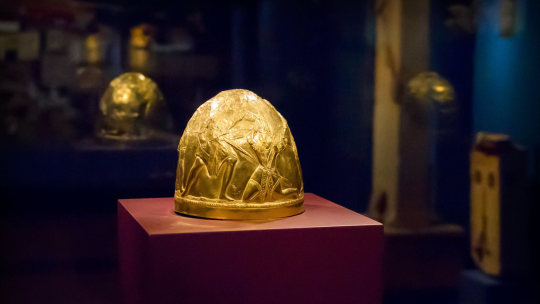
“It is very important for us to save and protect our history, traditions, and heritage. This is what we are fighting for at the battlefield. We are fighting for our identity and freedom,” he said.
“The exhibition in the Netherlands was showing the history of Ukrainian Crimea, therefore it is exclusively the people of Ukraine who should possess these treasures,” he added.
In a statement published on its website, the Allard Pierson museum in Amsterdam confirmed that the collection had been kept in storage while the legal dispute raged on over whether items should be returned to Ukraine or the four museums in Russian-controlled Crimea, with both sides claiming ownership rights over the historic pieces.
Ultimately, the Supreme Court of the Netherlands ruled on June 9 of this year that the collection should be returned to Kyiv.
In its statement, the Allard Pierson museum went on to say that the items were “independently checked and carefully packed in accordance with museum rules” last month and arrived back in Kyiv on Sunday.
Els van der Plas, director of the museum, said in the statement: “This was a special case, in which cultural heritage became a victim of geopolitical developments. After it became clear in 2014 that the judge would consider the case, we focused on safely storing the artefacts until the time came to return them to their rightful owner. We are pleased that clarity has emerged and that they have now been returned.”
Welcoming the development, Ukraine’s Ministry of Culture and Information Policy said in a statement: “Until the de-occupation of Crimea, the ‘Scythian Gold’ will be temporarily stored on the territory of the Kyiv-Pechersk Lavra.”
By Maria Kostenko, Victoria Butenko and Lianne Kolirin.
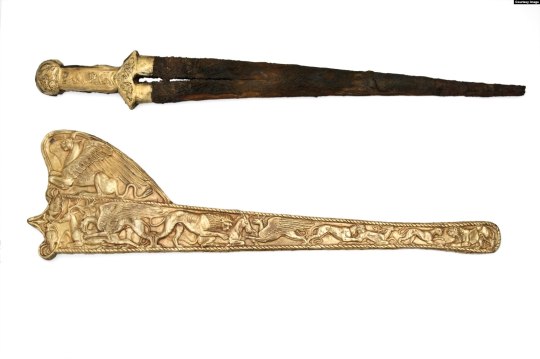
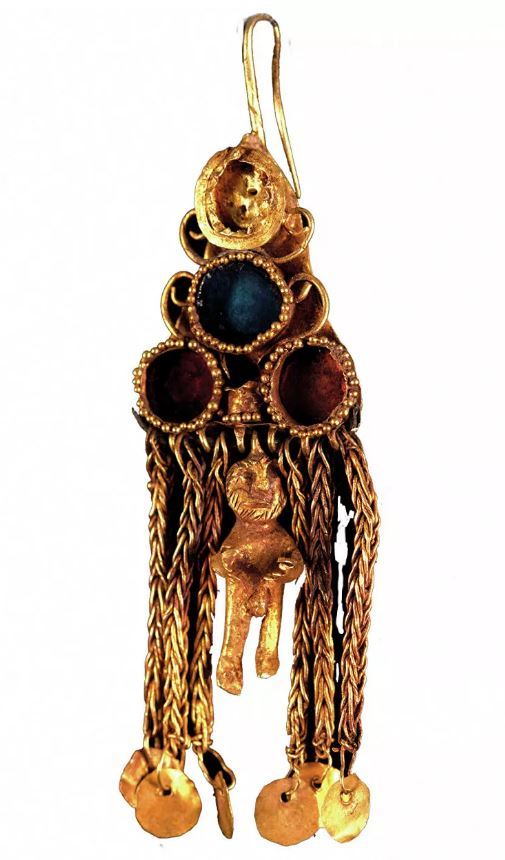
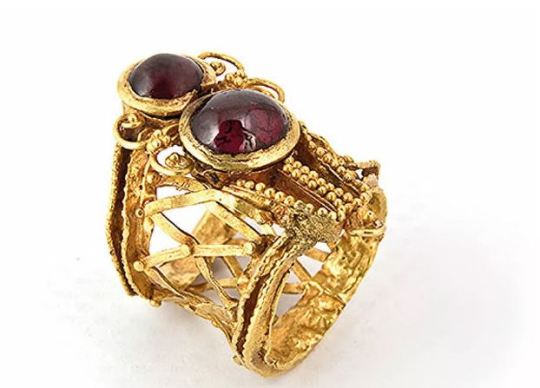
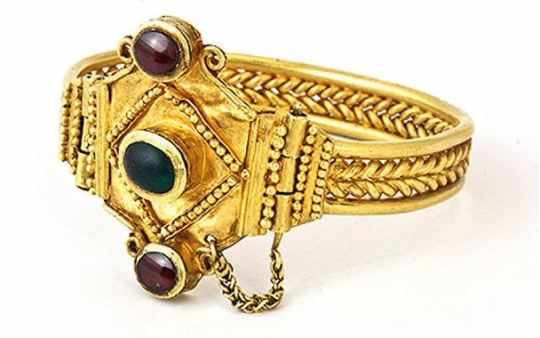

#Disputed Ukrainian Treasures Returned to Kyiv After Dutch Court Ruling#ukraine#crimea#russia#russia war crimes#looted#looted art#stolen#stolen art#gold#treasure#Scythian Gold#ancient artifacts#history#history news#ancient history#ancient culture#ancient civilizations
304 notes
·
View notes
Text
Illia Ponomarenko shows us one of the many gems Kyiv has to offer: The Kyiv Pechersk Lavra (or the Kyiv Lavra of the Caves). It is considered the most significant and holiest of places in Eastern Slavic Orthodox Christianity. This is an example of what is at stake for Ukraine as Russia continues its efforts to eradicate Ukrainian history and identity.
So, about 1,000 years ago, Kyiv was living its golden age as the center of a large medieval kingdom of Rus under Prince Yaroslav the Wise—very possibly the greatest ruler of Kyiv ever. The official residence of the rulers of Kyiv Rus was located in the town of Berestove outside Kyiv (it's now where Kyiv's Park of Eternal Glory is). The Berestove priest Illarion sought comfort and solitude, so he dug a lonesome cave in the hills at the Dnipro riverside, where he could spend his time alone in prayers. That happened around 1051 A.D. That guy soon became the head of the Kyiv Church and left, but more hermits followed his suit and established their shelters in those caves. Over many years, they burrowed long mazes of catacombs and established churches and monastic cells. The monastery gradually became a grandiose Lavra, a magnificent center of religious and cultural life, the greatest in this corner of human civilization. As early as 1073 A.D., the Cathedral of the Dormition (or the 'Great Church') was established (and you can see the modern iteration of it, the magnificent white cathedral bearing images of the saints on its walls. Just like Kyiv, the Lavra was ruined and resurrected from ashes several times over its 1,000-year history. Mongolians seized and desolated Kyiv in 1240, and the Lavra was devastated so hard that it spent well over a century in empty ruins. Yet, it would always rise again in all of its glory. During WWII, the Great Church was blown up just as many other iconic locations of Kyiv, such as Kherschatyk Street (in my opinion, what happened was that the Soviets planted bombs at the Lavra upon their withdrawal from the city in 1941 and failed to detonate them on time; and Nazis took out the treasures of the Lavra and got rid of the Soviet bombs by blowing up the cathedral. Like many other significant treasures of Kyiv, the Great Church of the Lavra was resurrected by independent Ukraine by the 2000s. The Lavra is indeed a city within a city—I'm only showing you a tiny part of it that is popular with tourists. Unfortunately, the ancient monastery caves have been closed to visitors for over a year. Technically, the Lavra is a giant museum with many art exhibitions, collections of historical artifacts, and recreation zones for anyone. Right now, for instance, the Lavra Historical Museum exhibits ancient Scthyntian gold from Crimea that was recently returned to Ukraine. At the Lavra, you can easily find the resting places of many historical figures of the past, such as the one of Kostiantyn Ostrozky, the legendary ultra-rich magnate of the 15th and 16th centuries and the Lavra's lavish sponsor, or Petr Stolypin, the Russian imperial prime minister who was assassinated at the Kyiv Opera House in 1911. Of course, the Lavra is about the iconic Great Bell Tower, one of Kyiv's most legendary landmarks. The tower is 96 meters high and can be seen from around 30 kilometers away from the Lavra. It takes over 370 stairs to reach the tower's top -- but I'm telling you, it's 100% worth it as the Great Bell Tower shows you a truly stunning view of Kyiv, especially when the weather is fine. Fucking legend. For centuries, until recently, the Lavra was under complete control by the Russian Orthodox Church, which is fundamentally loyal to Russia. In 2023, amid the war against Russia, Kyiv authorities and the Zelensky administration tried (and failed) to terminate the Moscow clergy's legal presence at the Lavra in 2023. Currently, the Russian church and its monks remain in control of the so-called Lower Lavra. In the Upper Lavra, which has most of the iconic places and locations, the recently re-established Orthodox Church of Ukraine, the de-facto successor of the old original Christian church of the Kyiv Rus, now has its divine service again. Welcome to the beautiful ancient Kyiv.
#Ukraine#Kyiv#russia is a terrorist state#Kyiv Pechersk Lavra#Lavra#Ukrainian culture#Illia Ponomarenko#video
57 notes
·
View notes
Photo

Medieval Monastery
A medieval monastery was an enclosed and sometimes remote community of monks led by an abbot who shunned worldly goods to live a simple life of prayer and devotion. Christian monasteries first developed in the 4th century in Egypt and Syria and by the 5th century the idea had spread to Western Europe.
Such figures as Saint Benedict of Nursia (d. c. 543), the founder of the Benedictine order, established rules by which the monks should live and these were, to various degrees, imitated and followed in subsequent centuries, including in those monasteries which survive today. Although their members were poor, the monasteries themselves were rich and powerful institutions, gathering wealth from land and property donated to them. Monasteries were also important centres of learning which educated the young, and, perhaps most significantly for today's historians, laboriously produced books and preserved ancient texts which have greatly enhanced our knowledge of not only the medieval world but also classical antiquity.
Origins & Development
From the 3rd century CE there developed a trend in Egypt and Syria which saw some Christians decide to live the life of a solitary hermit or ascetic. They did this because they thought that without any material or worldly distractions they would achieve a greater understanding of and closeness to God. In addition, whenever early Christians were persecuted they were sometimes forced by necessity to live in remote mountain areas where the essentials of life were lacking. As these individualists grew in number some of them began to live together in communities, continuing, though, to cut themselves off from the rest of society and devoting themselves entirely to prayer and the study of scriptures. Initially, members of these communities lived together in a place known as a lavra where they continued their solitary lives and only gathered together for religious services. Their leader, an abba (hence the later 'abbot') presided over these individualists – they were called monachos in Greek for that reason, which derived from mono meaning 'one', and which is the origin of the word 'monk'.
One of the earliest ascetics to begin organising monasteries where monks lived more communally was Pachomios (c. 290-346), an Egyptian and former soldier who, perhaps inspired by the efficiency of Roman army camps, founded nine monasteries for men and two for women at Tabennisi in Egypt. These first communal (cenobitic) monasteries were administered following a list of rules compiled by Pachomios, and this style of communal living (koinobion), where monks lived, worked, and worshipped together in a daily routine, with all property held in common, and an abbot administering them, became the common model in the Byzantine period.
The next step on the road to the type of monastery that became standard during the Middle Ages was made by Basil of Caesarea (aka Saint Basil or Basil the Great, c. 330-c. 379) in the 4th century. Basil had seen for himself the monasteries in Egypt and Syria and he sought to reproduce them across the Eastern Roman/Byzantine Empire. Basil added an extra dimension with his belief that monks should not only work together for common goals but also contribute to the wider community. Byzantine monasteries were independent organisations with their own set of rules and regulations for brother monks.
Continue reading...
41 notes
·
View notes
Text
St. Dositheos the Recluse of Kiev
The patron saint assigned (non-canonical lol) for @princess-stefan-3cy is St. Dositheos.
St. Dositheos was a woman named Daria who was given a male's name during her monastic tonsure because she pretended to be a man in order to hide from her parents who wanted her to get married.
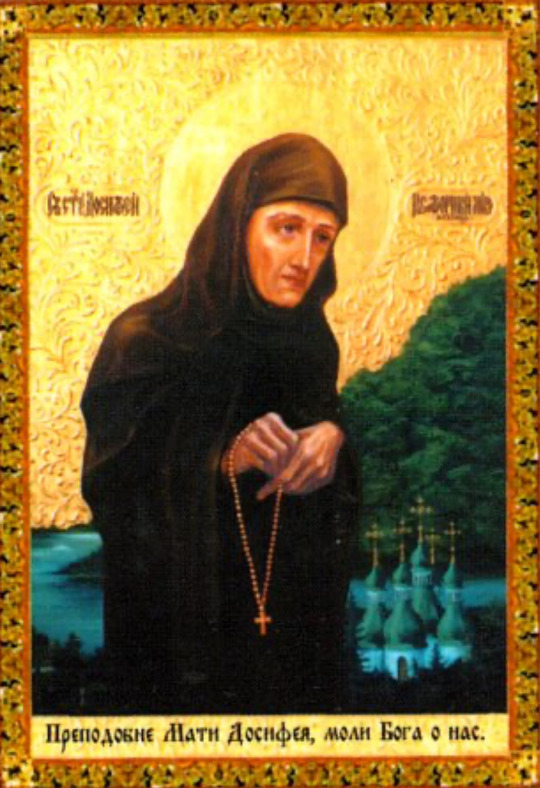
There was a noble family in the province of Riazan who had a daughter named Daria. When Daria was two years old, she visited her grandmother, Porphyria, in the Monastery of the Ascension in Moscow. Daria ended up staying in the monastery with her grandmother for seven years, until 1730, during which time she fell in love with the monastic way of life of asceticism and prayer.
When she returned home with her parents, they tried to educate her on the noble and high-status way of life, but her parents were constantly disappointed when they witnessed her interacting with beggars and wearing similar clothes to them. Daria would invite beggars into their home to feed and clothe them. To avoid her parents' lavish parties, she would seclude herself in her room.
This way of life for her lasted until she was 15 years old when her parents decided that she was old enough to get married. She realized her parents' intentions so she ran away from home, bought peasant clothing, cut off all her hair, and called herself the serf Dositheos.
Eventually she went to the Kiev Caves Lavra, far away from home, where she became well known as a man with great virtues and life-giving counsels. She hid in a cave and talked to people through a small hole in her door so that nobody would see her beardless face and reveal her identity as a woman.
She was officially tonsured by the request of Empress Elizabeth Petrovna who would visit her for her counsels. At some point, there was a young man named Prochoros who visited Saint Dositheos to receive her advice since he wanted to become a monk! She told him to go to Sarov to live in obedience to the abbott there, and behold, Prochoros was eventually tonsured, and himself became a saint.
Prochoros who received the blessing to become a monk from St. Dositheos became the beloved Saint Seraphim of Sarov!
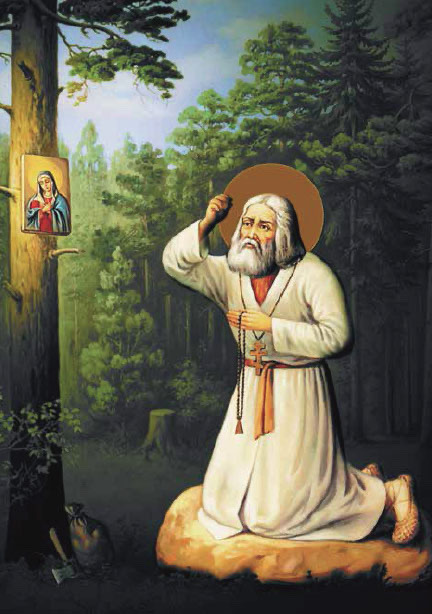
By imperial decree, Dositheos eventually had to leave his cave and he wandered the streets of Kiev, acting as a fool-for-Christ.
Dositheos performed many miracles, saving many families in Kiev from the plague which ravaged the city in September 1770.
In 1776, September 26, Dositheos reposed, leaving a note to her fellow monks to give her a monk's burial without tampering with her body, without cleaning or changing her clothes. (The custom is to wrap a monk's body in a rug and bury him without a coffin.)

One day, Dositheos's sister visited Kiev and found out that monk Dositheos who had once given her counsel had reposed, and when she went to the funeral service, she recognized the face of the monastic who was about to be buried and confirmed that Monk Dositheos of Kiev was her long-lost sister Daria who had disappeared from the noble Tiapkin family in the Riazan province!

Saint Dositheos the Recluse of the Kiev Caves, please intercede on our behalf before Christ our God that he may forgive us our many sins!
#patron saint requests#orthodox christianity#orthodoxy#eastern orthodoxy#christianity#eastern orthodox#orthodox#orthodox church#kiev#ukraine#ukranian#ukrajina#lavra of the kiev caves#imperial russia
29 notes
·
View notes
Text
SAINTS&READING: MONDAY, MARCH 3, 2025
february 18_march 3
Beginning of the Great Lent. Great Lent. By Monastic Charter - Full abstention from food0

St LEO THE GREAT POPE OF ROME (461).

Saint Leo I the Great, Pope of Rome (440-461), received a fine and diverse education, which opened the possibility of an excellent worldly career for him. He yearned for the spiritual life, however, and so he chose to become an archdeacon under holy Pope Sixtus III (432-440), after whose death Saint Leo was selected as Bishop of Rome in September 440.
These were difficult times for the Church, when heretics assaulted Orthodoxy with their false teachings. Saint Leo combined pastoral solicitude and goodness with an unshakable firmness in the confession of the Faith. He was in particular one of the basic defenders of Orthodoxy against the heresies of Eutyches and Dioscorus, who taught that there was only one nature in the Lord Jesus Christ. He was also a defender against the heresy of Nestorius.
He exerted all his influence to put an end to the unrest by the heretics in the Church, and by his letters to the holy emperors Theodosius II (408-450) and Marcian (450-457), he actively promoted the convening of the Fourth Ecumenical Council, at Chalcedon in 451, to condemn the heresy of the Monophysites.
At the Council at Chalcedon, at which 630 bishops were present, a letter of Saint Leo to the deceased Saint Flavian, Patriarch of Constantinople (447-449) was read. Saint Flavian had suffered for Orthodoxy under the “Robber Council” of Ephesus in the year 449. In the letter of Saint Leo the Orthodox teaching about the two natures [the divine and the human] in the Lord Jesus Christ was set forth. All the bishops present at the Council were in agreement with this teaching, and so the heretics Eutyches and Dioscorus were excommunicated from the Church.
Saint Leo was also a defender of his country against the incursions of barbarians. In 452, by the persuasive power of his words, he stopped Attila the Hun from pillaging Italy. Again in the year 455, when the leader of the Vandals [a Germanic tribe], Henzerich, turned towards Rome, he persuaded him not to pillage the city, burn buildings, nor to spill blood.
He knew the time of his death beforehand, and he prepared himself, with forty days of fasting and prayer, to pass from this world into eternity.
He died in 461 and was buried in Rome. His literary and theological legacy includes 96 sermons and 143 letters, the best known of which is his Epistle to Saint Flavian.
Source: Orthodox Church in America
VENERABLE COSMAS MONK, OF YAKHROMSK (1492).

Saint Cosmas of Yakhrom was the servant of a certain Boyar, whom he comforted during his long illness by reading to him from books. And so, travelling from town to town, they stopped at the Yakhrom River. Exhausted by their long journey, they fell into a sound sleep. Suddenly, Cosmas was awakened by a vision of extraordinary light. In a tree, Cosmas saw an icon of the Dormition of the Most Holy Theotokos, and he heard a mysterious voice say: "Pay attention, Cosmas, and understand the words of life. Lead a God-pleasing life and seek the joy of the righteous, so that you may receive eternal blessings.”
The voice also commanded him to become a monk and to build a monastery.
Reverently, he took the Icon of the Mother of God and brought it to his sick master. As soon as it was placed on the old man, he was healed of his infirmity. When his term of servitude expired, Saint Cosmas went to the Kiev Caves Lavra. After giving the Icon to the brethren, he was tonsured in that Monastery. After he was tonsured, he astonished even experienced monks by his asceticism. The Saint contested there for many years, and then he had a vision of an Angel telling him to leave the Lavra and to take with him the Icon of the Mother of God which had appeared to him.
He asked the monks for the Icon, and left Kiev, arriving at the place where the wonderworking Icon had appeared to him. There, with the help of some pious donors, he built a temple dedicated to the Dormition of the Mother of God. He remained at the church, engaging in various monastic struggles which he had imposed on himself. Disciples began to gather around the Saint, a Monastery was established, and Saint Cosmas was chosen as its Igoumen. During this time, word of his ascetic struggles even reached the ears of the Great Prince.
Saint Cosmas reposed at an advanced age on February 18, 1492, and was buried in the Monastery which he founded. He is also commemorated on October 14, the Feast of the Yakhrom Icon of the Mother of God. (1)
1 Many sources indicate that it was an icon of the Dormition of the Most Holy Theotokos which appeared to Saint Cosmas, but only a reputed copy of the Icon has been preserved, which depicts the Mother of God according to the "Tenderness" category of Russian icons.


Isaiah 1:1-20
1 The vision of Isaiah the son of Amoz, which he saw concerning Judah and Jerusalem in the days of Uzziah, Jotham, Ahaz, and Hezekiah, kings of Judah. 2 Hear, O heavens, and give ear, O earth! For the Lord has spoken: “I have nourished and brought up children, And they have rebelled against Me; 3 The ox knows its owner And the donkey its master’s crib; But Israel does not know, My people do not consider.”
4 Alas, sinful nation, A people laden with iniquity, A brood of evildoers, Children who are corrupters! They have forsaken the Lord, They have provoked to anger The Holy One of Israel, They have turned away backward. 5 Why should you be stricken again? You will revolt more and more. The whole head is sick, And the whole heart faints. 6 From the sole of the foot even to the head, There is no soundness in it, But wounds and bruises and putrefying sores; They have not been closed or bound up, Or soothed with ointment.
7 Your country is desolate, Your cities are burned with fire; Strangers devour your land in your presence; And it is desolate, as overthrown by strangers. 8 So the daughter of Zion is left as a booth in a vineyard, As a hut in a garden of cucumbers, As a besieged city. 9 Unless the Lord of hosts Had left to us a very small remnant, We would have become like Sodom, We would have been made like Gomorrah
. 10 Hear the word of the Lord, You rulers of Sodom; Give ear to the law of our God, You people of Gomorrah: 11 “To what purpose is the multitude of your sacrifices to Me?” Says the Lord. “I have had enough of burnt offerings of rams And the fat of fed cattle. I do not delight in the blood of bulls, Or of lambs or goats 12 “When you come to appear before Me, Who has required this from your hand, To trample My courts?
13 Bring no more futile sacrifices; Incense is an abomination to Me. The New Moons, the Sabbaths, and the calling of assemblies— I cannot endure iniquity and the sacred meeting. 14 Your New Moons and your appointed feasts My soul hates; They are a trouble to Me, I am weary of bearing them. 15 When you spread out your hands, I will hide My eyes from you; Even though you make many prayers, I will not hear. Your hands are full of blood.
16 “Wash yourselves, make yourselves clean; Put away the evil of your doings from before My eyes. Cease to do evil, 17 Learn to do good; Seek justice, Rebuke the oppressor; Defend the fatherless, Plead for the widow. 18 “Come now, and let us reason together,” Says the Lord, “Though your sins are like scarlet, They shall be as white as snow; Though they are red like crimson, They shall be as wool.
19 If you are willing and obedient, You shall eat the good of the land; 20 But if you refuse and rebel, You shall be devoured by the sword”; For the mouth of the Lord has spoken.
Proverbs 1:1-20
1 The proverbs of Solomon the son of David, king of Israel: 2 To know wisdom and instruction, To perceive the words of understanding, 3 To receive the instruction of wisdom, Justice, judgment, and equity; 4 To give prudence to the simple, To the young man knowledge and discretion— 5 A wise man will hear and increase learning, And a man of understanding will attain wise counsel, 6 To understand a proverb and an enigma, The words of the wise and their riddles. 7 The fear of the Lord is the beginning of knowledge, But fools despise wisdom and instruction. 8 My son, hear the instruction of your father, 9 For they will be a graceful ornament on your head, And chains about your neck. 10 My son, if sinners entice you, Do not consent. 11 If they say, “Come with us, Let us lie in wait to shed blood; Let us lurk secretly for the innocent without cause; 12 Let us swallow them alive like Sheol, And whole, like those who go down to the Pit; 13 We shall find all kinds of precious possessions, We shall fill our houses with spoil; 14 Cast in your lot among us, Let us all have one purse”— 15 My son, do not walk in the way with them, Keep your foot from their path; 16 For their feet run to evil, And they make haste to shed blood. 17 Surely, in vain the net is spread In the sight of any bird; 18 But they lie in wait for their own blood, They lurk secretly for their own lives. 19 So are the ways of everyone who is greedy for gain; It takes away the life of its owners. 20 Wisdom calls aloud outside; She raises her voice in the open squares.
#orthodoxy#orthodoxchristianity#easternorthodoxchurch#originofchristianity#holyscriptures#bible#wisdom#spirituality#faith#saints#old testament
7 notes
·
View notes
Text
Today in Christian History

Today is Friday, May 3rd, 2024. It is the 124th day of the year in the Gregorian calendar; Because it is a leap year, 242 days remain until the end of the year.
321: Emperor Constantine the Great writes to his representative in North Africa, saying persecution of the Donatists (a Christian sect) must stop.
845: Rothad, bishop of Soissons consecrates Hincmar as Archbishop of Rheims. Hincmar will spend his life in battles to hold his position and in clashes with clergymen and kings to keep the church free of corruption and tyranny—at which he will fail.
1074: Death of Theodosius, a founder of the Kiev Pechersk Lavra (Monastery of the Kiev Caves). With Anthony of the Caves, he had introduced monasticism to Russia.
1679: Assassination of James Sharpe, Archbishop of St Andrew's, on Magus Moor. At one time a Presbyterian and Covenanter, he had joined the Church of England for the sake of advancement and had been made an archbishop. He had proceeded to brutally persecute his former brethren until at last, on this day, a band of Covenanters surround him and stab him to death to end his cruelty.
1784: Death in Philadelphia of Anthony Benezet (pictured above), a Quaker philanthropist and abolitionist.
1829: Nineteen-year-old Andrew Bonar, who will later become an influential minister in the Free Church of Scotland, notes in his journal that he is still out of Christ.
1831: Death of Elizabeth Hervey from dysentery before she could begin mission work in India.
1862: Death in New York City of Nathan Bangs, a Methodist minister and theologian, who had authored many books, including a massive history of Methodism in America. He had also been a successful Methodist publisher.
1878: Death in Winchester of William Whiting, master of Winchester College Choristers’ School. He had written the hymn “Eternal Father, Strong to Save” when one of his students sailed for America in 1860. Later writers added stanzas for submariners, airmen, and other branches of the military.
1989: Five-thousand Dani tribe members in Irian Jaya (Western New Guinea) gather for a two-day pig feast to celebrate the completion and distribution of a Dani-language New Testament.
6 notes
·
View notes
Text
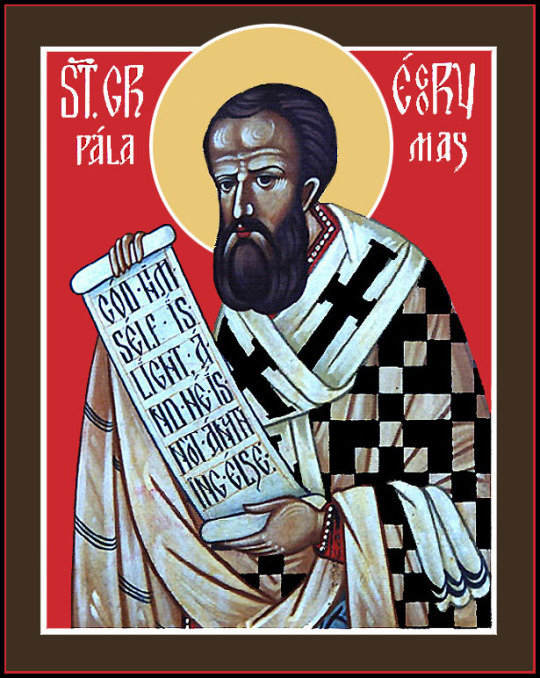
2nd Sunday of Great Lent: St Gregory Palamas
Commemorated on March 31
O luminary of Orthodoxy, support and teacher of the Church, ideal of monks and invincible champion of theologians, O wonderworker Gregory, boast of Thessalonika and herald of grace, always intercede for all of us that our souls may be saved.
This Sunday was originally dedicated to Saint Polycarp of Smyrna (February 23). After his glorification in 1368, a second commemoration of Saint Gregory Palamas (November 14) was appointed for the Second Sunday of Great Lent as a second “Triumph of Orthodoxy.”
Saint Gregory Palamas, Archbishop of Thessalonica, was born in the year 1296 in Constantinople. Saint Gregory’s father became a prominent dignitiary at the court of Andronicus II Paleologos (1282-1328), but he soon died, and Andronicus himself took part in the raising and education of the fatherless boy. Endowed with fine abilities and great diligence, Gregory mastered all the subjects which then comprised the full course of medieval higher education. The emperor hoped that the youth would devote himself to government work. But Gregory, barely twenty years old, withdrew to Mount Athos in the year 1316 (other sources say 1318) and became a novice in the Vatopedi monastery under the guidance of the monastic Elder Saint Νikόdēmos of Vatopedi (July 11). There he was tonsured and began on the path of asceticism. A year later, the holy Evangelist John the Theologian appeared to him in a vision and promised him his spiritual protection. Gregory’s mother and sisters also became monastics.
After the demise of the Elder Νikόdēmos, Saint Gregory spent eight years of spiritual struggle under the guidance of the Elder Nikēphóros, and after the latter’s death, Gregory transferred to the Lavra of Saint Athanasius (July 5). Here he served in the trapeza, and then became a church singer. But after three years, he resettled in the small skete of Glossia, striving for a greater degree of spiritual perfection. The head of this monastery began to teach the young man the method of unceasing prayer and mental activity, which had been cultivated by monastics, beginning with the great desert ascetics of the fourth century: Evagrius Pontikos and Saint Macarius of Egypt (January 19).
Later on, in the eleventh century Saint Simeon the New Theologian (March 12) provided detailed instruction in mental activity for those praying in an outward manner, and the ascetics of Athos put it into practice. The experienced use of mental prayer (or prayer of the heart), requiring solitude and quiet, is called “Hesychasm” (from the Greek “hesychia” meaning calm, silence), and those practicing it were called “hesychasts.”
During his stay at Glossia the future hierarch Gregory became fully embued with the spirit of hesychasm and adopted it as an essential part of his life. In the year 1326, because of the threat of Turkish invasions, he and the brethren retreated to Thessalonica, where he was then ordained to the holy priesthood.
Saint Gregory combined his priestly duties with the life of a hermit. Five days of the week he spent in silence and prayer, and only on Saturday and Sunday did he come out to his people. He celebrated divine services and preached sermons. For those present in church, his teaching often evoked both tenderness and tears. Sometimes he visited theological gatherings of the city’s educated youth, headed by the future patriarch, Isidore. After he returned from a visit to Constantinople, he found a place suitable for solitary life near Thessalonica the region of Bereia. Soon he gathered here a small community of solitary monks and guided it for five years.
In 1331 the saint withdrew to Mt. Athos and lived in solitude at the skete of Saint Savva, near the Lavra of Saint Athanasius. In 1333 he was appointed Igumen of the Esphigmenou monastery in the northern part of the Holy Mountain. In 1336 the saint returned to the skete of Saint Savva, where he devoted himself to theological works, continuing with this until the end of his life.
In the 1330s events took place in the life of the Eastern Church which put Saint Gregory among the most significant universal apologists of Orthodoxy, and brought him great renown as a teacher of hesychasm.
About the year 1330 the learned monk Barlaam had arrived in Constantinople from Calabria, in Italy. He was the author of treatises on logic and astronomy, a skilled and sharp-witted orator, and he received a university chair in the capital city and began to expound on the works of Saint Dionysius the Areopagite (October 3), whose “apophatic” (“negative”, in contrast to “kataphatic” or “positive”) theology was acclaimed in equal measure in both the Eastern and the Western Churches. Soon Barlaam journeyed to Mt. Athos, where he became acquainted with the spiritual life of the hesychasts. Saying that it was impossible to know the essence of God, he declared mental prayer a heretical error. Journeying from Mount Athos to Thessalonica, and from there to Constantinople, and later again to Thessalonica, Barlaam entered into disputes with the monks and attempted to demonstrate the created, material nature of the light of Tabor (i.e. at the Transfiguration). He ridiculed the teachings of the monks about the methods of prayer and about the uncreated light seen by the hesychasts.
Saint Gregory, at the request of the Athonite monks, replied with verbal admonitions at first. But seeing the futility of such efforts, he put his theological arguments in writing. Thus appeared the “Triads in Defense of the Holy Hesychasts” (1338). Towards the year 1340 the Athonite ascetics, with the assistance of the saint, compiled a general response to the attacks of Barlaam, the so-called “Hagiorite Tome.” At the Constantinople Council of 1341 in the church of Hagia Sophia Saint Gregory Palamas debated with Barlaam, focusing upon the nature of the light of Mount Tabor. On May 27, 1341 the Council accepted the position of Saint Gregory Palamas, that God, unapproachable in His Essence, reveals Himself through His energies, which are directed towards the world and are able to be perceived, like the light of Tabor, but which are neither material nor created. The teachings of Barlaam were condemned as heresy, and he himself was anathemized and fled to Calabria.
But the dispute between the Palamites and the Barlaamites was far from over. To these latter belonged Barlaam’s disciple, the Bulgarian monk Akyndinos, and also Patriarch John XIV Kalekos (1341-1347); the emperor Andronicus III Paleologos (1328-1341) was also inclined toward their opinion. Akyndinos, whose name means “one who inflicts no harm,” actually caused great harm by his heretical teaching. Akyndinos wrote a series of tracts in which he declared Saint Gregory and the Athonite monks guilty of causing church disorders. The saint, in turn, wrote a detailed refutation of Akyndinos’ errors. The patriarch supported Akyndinos and called Saint Gregory the cause of all disorders and disturbances in the Church (1344) and had him locked up in prison for four years. In 1347, when John the XIV was replaced on the patriarchal throne by Isidore (1347-1349), Saint Gregory Palamas was set free and was made Archbishop of Thessalonica.
In 1351 the Council of Blachernae solemnly upheld the Orthodoxy of his teachings. But the people of Thessalonica did not immediately accept Saint Gregory, and he was compelled to live in various places. On one of his travels to Constantinople the Byzantine ship fell into the hands of the Turks. Even in captivity, Saint Gregory preached to Christian prisoners and even to his Moslem captors. The Hagarenes were astonished by the wisdom of his words. Some of the Moslems were unable to endure this, so they beat him and would have killed him if they had not expected to obtain a large ransom for him. A year later, Saint Gregory was ransomed and returned to Thessalonica.
Saint Gregory performed many miracles in the three years before his death, healing those afflicted with illness. On the eve of his repose, Saint John Chrysostom appeared to him in a vision. With the words “To the heights! To the heights!” Saint Gregory Palamas fell asleep in the Lord on November 14, 1359. In 1368 he was canonized at a Constantinople Council under Patriarch Philotheus (1354-1355, 1364-1376), who compiled the Life and Services to the saint.
[Text from OCA]
Now is the time for action! Judgment is at the doors! So let us rise and fast, offering alms with tears of compunction and crying: “Our sins are more numerous than the sands of the sea; but forgive us, O Master of All, so that we may receive the incorruptible crowns.”
Holy and divine instrument of wisdom, radiant and harmonious trumpet of theology, we praise you in song, O divinely-speaking Gregory. As a mind standing before the Primal Mind, guide our minds to Him, Father, so that we may cry aloud to you: “Rejoice, herald of grace.”
7 notes
·
View notes
Text
First Friday, Within the Octave of Sts Peter and Paul, Our Lady of Mount Athos, Great Lavra, Greece , 8th Century, St Anthony Mary Zaccaria and the Saints for 5 July
First Friday Within the Octave of Sts Peter and Paul Our Lady of Mount Athos, Great Lavra, Greece , 8th Century. – 5 July:HERE:https://anastpaul.com/2021/07/05/our-lady-of-mount-athos-great-lavra-greece-8th-century-and-memorials-of-the-saints-5-july/ St Anthony Mary Zaccaria CRSP (1502-1539) Confessor, Priest, Founder, Philosopher, Doctor of Medicine/Physician, Renewal of the Forty Hours’…
4 notes
·
View notes
Text
Tetiana Golembievskaya (1936-2018): Grandeur of Art Celebrating Ukrainian Worship

One of Tetiana Golembievskaya's most outstanding series is titled "Worship." This series comprises a collection of masterpieces that impress with their grandeur and depth.
1. "Askold's Grave" is one of the initial paintings in this series, portraying the mighty historical heritage of Ukraine. 2. "Worship in Sviatohirsk" transports the audience into an atmosphere of spiritual ascent, where earthly and heavenly realms intertwine. 3. "Worship in the Kyiv Lavra" is a unique illustration of the cultural and spiritual heart of the Ukrainian capital. 4. "Worship in the Pochaiv Lavra" is a painting that reveals the mystical beauty of the Pochaiv Lavra. 5. "Worship in Chersonesos" immerses everyone into the depths of Ukraine's centuries-old history. 6. "Kyiv-Pechersk Lavra" is the final masterpiece of the series, preserving the incomparable spirituality and cultural heritage of Kyiv.
Cultural space Kobzar introduces visitors to the works of the great Ukrainian artist Tetiana Golembievskaya. Paintings from the series "Worship" are for sale in the virtual gallery KobzarArt.
11 notes
·
View notes
Text
Christmas address by President of Ukraine Volodymyr Zelenskyy
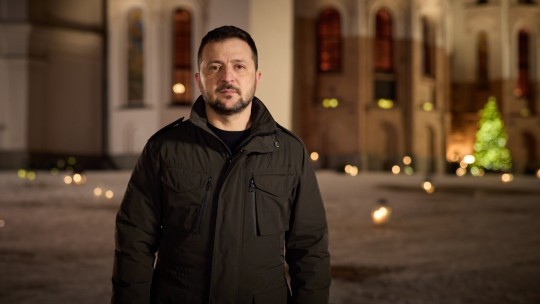
Fellow Ukrainians!
Millions of Ukrainians today are waiting for the first star to appear in the evening sky, heralding the arrival of Christmas. A holiday of many shades. A great church holiday. An important national holiday. A family holiday. Christmas, which is always loved by children and awaited by adults. Christmas, which fills hearts with light. Christmas, which always gives hope.
For the second year now, we have learned another form of it, another dimension. This is Christmas in times of full-scale war. Christmas with a different mood, context, and flavor.
And a family dinner at home is not the same as usual. Because not all of us are at home. And not everyone has a home. And it has become much more important not what dishes are on the table, but what people are at the table. And how precious it is to have them around.
How important it is to stay in touch with those who are not around, who are defending Ukraine now. What a relief it is to see a "double tick" on the screen meaning the message was delivered and read. How crucial it is to get a response from them.
How our gifts, values, and traditions have changed. How today it's not so much about how we decorate our homes, but rather how we protect them and clean up the mess, sweeping the enemy out of our home. How we rejoice at seeing the first star in the evening sky and not seeing enemy missiles and "Shaheds" in it.
How joyously and sonorously sound the hundreds of our carols, and just three words: "air raid over."
How our wishes have changed. How children's wishes have changed. From the simple and usual "I wish for dad to come home early from work" to "I wish for dad to come back."
For all fathers, husbands, brothers, grandfathers to come back. Mothers, wives, sisters. To return victorious. All those who are meeting the Christmas Eve in the trenches with weapons in their hands, facing the enemy. All our warriors of light. Guardian angels of Ukraine, who prove to us every day: good will prevail, light will prevail, one must have steadfast spirit, and strong faith. Those who prove that miracles do exist. But we have to create them ourselves, obtain them ourselves, make the impossible possible.
Every day we pray for each of them. We pray for an end to the war. We pray for victory.
We will do so today as well. Wherever we are. Wherever we spend Christmas. Today, all Ukrainians are together. We all meet Christmas together. On the same date, as one big family, as one nation, as one united country. And today our common prayer will be stronger than ever. The people's prayer. Today, it will unite millions of voices - more than ever before. And it will resonate today without a time difference of two weeks. Resonate together with Europe and the world.
And this is a unique prayer. For people, for peace, for justice, a prayer for life. And today it will be heard in different parts of the world, coming from the hearts of different people, in different languages. And even from different denominations. Because this is a prayer for life, and it has no borders.
In troubled times, as we defend our land and our souls, we are making our way to freedom. The way to gaining comprehensive independence, including spiritual one. Freedom of our faith from the ideology of slavery. From a cult that has nothing human or sacred within it. One that brings violence, aggression, hatred. One that takes away security and peace, takes away other people's lands and human lives. Yet one that will be defeated. By the power of faith, the power of truth, the power of law, the power of justice, the power of our Ukraine.
Right now, I am in the Kyiv Pechersk Lavra. Majestic. Iconic. Ours.
A thousand-year old symbol of Ukrainian history, our culture, religion, Orthodoxy, and all of Eastern Christianity. A proof of our unyielding fortitude, resilience, tough challenges and ability to overcome them. Invariably reviving and growing.
Throughout its history, this place has experienced numerous upheavals and hardships. Profanation, desecration, looting. The Horde, the Nazis, the Soviet times. This place was captured, burned, and destroyed. But no one has ever been able to destroy it completely and forever. The Lavra has always withstood to be reborn again. And after each blow, it not only recovered, but grew bigger and stronger. Because it was and remains a place of power for people. A source of hope and spirit for our people. For everyone who believes. In the victory of truth. The victory of Ukraine.
Christmas Eve is the time of the longest nights of the year. But tomorrow the day starts getting longer, the light starts prevailing. The light is getting stronger. And step by step, day by day, the darkness retreats.
And in the end, darkness will lose. Evil will be defeated. Today, this is our common goal, our common dream, and this is what our common prayer is for today. For our freedom. For our victory. For our Ukraine. For the day when we can all come together at home in a peaceful year of peaceful Christmas. And say to each other: "Christ is born!"
Dear Ukrainians! I extend my Christmas congratulations to all of you! May the light of faith reign in your souls, the light of hope fill your hearts, and love and prosperity fill your homes.
As our ancestors used to say and sing: "Let the sky and the earth bear fruit. Let the sky bear stars, and let the earth bear flowers. God grant it!"
And as we will say today: "Let our Ukraine bear victory and peace. God grant it!"
Congratulations, dear people of Ukraine!
Christ is born! Let us praise Him!
youtube
2 notes
·
View notes
Text

The Mary of the Gael
The Life and Legacy of Saint Brigid
Saint Brigid of Kildare, one of Ireland's most beloved and revered saints, is regarded as a luminary in the Christian tradition. Her life is imbued with a radiant faith, profound humility, and remarkable devotion to God. St. Brigid serves as a symbol of light, compassion, and the transformative power of holiness, qualities worthy of contemplation and emulation.
Brigid was born around 451 or 452 AD in Faughart near Dundalk, County Louth, Ireland an age when the island was transitioning from its pagan heritage to the Christian faith introduced by St. Patrick.
Her father, Dubhthach, was a noble chieftain of Leinster, and her mother, Brocca, was a Christian slave of Pictish origin. Despite her rather challenging and divided familial background, God’s hand was evident in shaping her destiny. Even as a child, Brigid displayed extraordinary piety and generosity, characteristics that became hallmarks of her life.
There are many stories of her charity as a young girl. It is said that she would give away her family’s possessions to the poor without hesitation, causing no small consternation to her father. Yet, Brigid demonstrated a deeper understanding of divine providence than most adults, knowing that to give to the poor is to give to Christ Himself. Her generosity foreshadows the Orthodox monastic ideal of self-emptying love or **kenosis**, which echoes Christ’s own descent into humility for the salvation of humanity.
From an early age, St. Brigid was drawn to a life of religious devotion. Defying the expectations of her father, who sought to arrange her marriage, she chose instead to consecrate her life to Christ. Around the year 468, she entered religious life and received monastic tonsure, embracing a life of virginity, prayer, and asceticism. Brigid’s longing for God exemplifies what the Church tradition calls the “eros theou”, a burning love and desire for communion with the Divine.
Brigid soon gathered a community of like-minded women, which led to the founding of her most famous monastery at Kildare around 480 AD. The name 'Kildare' (Cill Dara in Irish) means 'Church of the Oak,' reflecting both the physical and spiritual shelter St. Brigid offered to those in need. Her monastery was unique in that it included both men and women, following a double-monastic model. This mirrors the Orthodox tradition of community monasteries that emphasize mutual support, obedience, and attentiveness to Christ at the center of all things.
The Kildare monastery became a beacon of learning, hospitality, and spiritual renewal, foreshadowing the later great monasteries of the Christian East, such as St. Catherine’s at Mount Sinai or the Lavra of St. Sabbas in Palestine. Indeed, St. Brigid’s monastery fulfilled the Orthodox understanding of the church as a living organism, a microcosm of the Kingdom of God and a place where heaven meets earth.
St. Brigid’s life was adorned with numerous miracles, many of which emphasize her unshakable faith and compassionate heart. Orthodox Christians are deeply familiar with the lives of saints who, through their profound union with God, become vessels of divine grace in the world. Brigid was no exception. She is said to have multiplied food and milk to feed the hungry, healed the sick, and even tamed wild animals. One account beautifully describes her causing a stream to flow from dry ground to provide water for a community.
These miracles, though wondrous in themselves, served a higher purpose, they were signs pointing to the transformative power of a life wholly surrendered to God. Just as Moses struck a rock to produce water in the wilderness, so Brigid’s life became an outpouring of living water, nourishing both body and soul. Her miracles remind us of our call as Christians to serve as conduits of God’s grace and love, imitating Christ’s own miraculous works of mercy.
In reflecting on the life of St. Brigid, it is impossible not to see in her a model of “theosis”, Through her asceticism, humility, and boundless charity, she participated in God’s divine life, allowing His light to shine through her actions. In this sense, St. Brigid embodies the ultimate goal of the Christian life: to be united with God, not only in the life to come but even now, in this earthly pilgrimage.
Her dedication to God’s creation expressed in her care for the poor, her love for animals, and her attentiveness to the beauty of the natural world reflects another key tenet of Christian spirituality: sacramentality. To St. Brigid, all of creation was a divine gift, imbued with God’s presence and deserving of reverence and care.
Though deeply rooted in Irish soil and tradition, St. Brigid belongs to the entire Church. In the church, we hold that the saints are timeless and boundless, transcending geography and denominational distinctions. Her life and virtues render her an ecumenical figure, bridging the East and the West, the ancient and the modern. St. Brigid teaches us that holiness is not confined by time, culture, or ecclesiastical jurisdiction; it is available to all who seek God with pure hearts.
St. Brigid offers a vibrant example of what it means to live out the Gospel authentically, with unrelenting compassion, unwavering faith, and profound humility. Her life, like the flame she is often associated with, continues to burn brightly, illuminating the path of holiness for all who aspire to draw closer to God. May her prayers and example inspire us to pursue that same union with Christ in our own lives, so that we too may become vessels of His grace in the world.
0 notes
Text

Fortepan, Pecherska Lavra Monastery, the Gate Church of the Trinity and the Great Bell Tower, 1942 x
1 note
·
View note
Text
SAINTS&READING: SATURDAY, OCTOBER 12, 2024
october 29_september 12
VENERABLE KYRIAKOS, THE HERMIT OF PALESTINE (556)
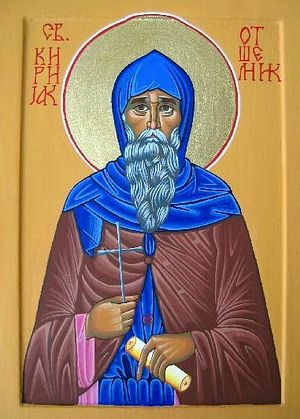
Saint Kyriakos (Kyriákos)1 was born in the Greek city of Corinth to the priest John and his wife Eudokίa. Bishop Peter of Corinth, a family relative, saw that Kyriakos was a quiet and sensible child, making him a reader in church. His constant reading of the Holy Scriptures awakened a love for the Lord and made him long for a pure and holy life.
When he was not yet eighteen years old, Kyriakos was deeply moved during a Church Service by the words of the Gospel: “If any man will come after Me, let him deny himself and take up his cross and follow Me” (Matthew 16:24). He believed that these words applied to him, so he went straight to the harbor without stopping at home, got onto a ship, and went to Jerusalem.
After visiting the holy places, Kyriakos lived for several months at a monastery not far from Sion, in obedience to the Igoumen Abba Eustorgios (Eustórgios). Later, with the latter's blessing, he made his way to the wilderness Lavra of Saint Euthymios the Great (January 20). Saint Euthymios, discerning great gifts of God in Kyriakos, tonsured him into the monastic schema and placed him under the guidance of Saint Gerasimos (Gerásimos) (March 4), who trained him in asceticism at the Monastery of Saint Theoktistos (Theóktistos) by the Jordan.
Saint Gerasimos, taking into account the fact that Kyriakos was very young, ordered him to live in a cenobitic monastery with the brethren. The young monk easily fulfilled his monastic obediences: he prayed fervently, he slept little, and ate food only every other day, sustaining himself with bread and water.
It was customary for the monks to go into the Rouva wilderness during Great Lent, and return to the Monastery on Palm Sunday. Seeing the young monk's strict abstinence, Saint Gerasimos decided to take him along with him. In complete solitude, the ascetics redoubled their efforts. Every Sunday Saint Gerasimos imparted the Holy Mysteries to his disciple.
After the repose of Saint Gerasimos, the twenty-seven-year-old Kyriakos returned to the Lavra of Saint Euthymios, who was no longer among the living. Father Kyriakos asked for a solitary cell and there he devoted himself to ascetical contests in silence, speaking only to the monk Thomas. But Thomas was sent to Alexandria where he was consecrated as a bishop, and Saint Kyriákos spent another ten years in complete silence. At the age of thirty-seven, he was ordained to the diaconate.
When a rift occurred between the monasteries of Saint Euthymios and Saint Theoktistos, Saint Kyriakos withdrew to the Souka Monastery of Saint Kharίton (September 28). At this Monastery they received even tonsured monks as novices, and Saint Kyriakos was also received this way. He toiled humbly at various monastic obediences. After several years, Saint Kyriakos was ordained as a priest, and was chosen as the canonarch,2 serving in this obedience for eighteen years. In all, Saint Kyriakos spent thirty years at the Monastery of Saint Kharίton (September 28).
Strict fasting and a complete lack of evil distinguished Saint Kyriakos even among the older ascetics of the Lavra. Each night he read the Psalter in his cell, interrupting his reading only to go to church at midnight. The ascetic slept very little. When he reached the age of seventy, Kyriakos went to the Natoufa wilderness, taking his disciple John with him.
In the desert the hermits ate only bitter herbs, which were made edible by the prayers of Saint Kyriakos. After five years, a certain man found out about the ascetics and brought his demon-possessed son to them, and Saint Kyriakos healed him. From that time, many people began coming to him with their needs, but he desired complete solitude, and fled to the Rouva wilderness, where he dwelt five years more. But the sick and those afflicted by demons also came to him in that wilderness, and the Saint healed them all with the Sign of the Cross and anointing them with oil.
In his eightieth year Saint Kyriakos fled to the remote Sousakim wilderness, near two dried up streams. According to Tradition, the holy Prophet David mentioned Sousakim: “Thou hast dried up the rivers of Etham” (Psalm 73/74:15). After seven years, brethren of the Souka Monastery came to him, beseeching his spiritual help during a period of debilitating hunger and illness, which God allowed. They implored Saint Kyriakos to return to the Monastery, and he settled in the cave where Saint Kharίton had once lived.
Saint Kyriakos provided great help to the Church in the struggle with the spreading heresy of Origenism. By prayer and by word, he brought the wayward back to the true path, and strengthened the Orthodox in their faith. Cyril, the author of the Life of Saint Kyriakos, and a monk of the Lavra of Saint Euthymios, was a witness when Saint Kyriakos foretold the impending death of the chief heretics Nonos and Leontius, and said that soon the heresy would cease to spread.
The Most Holy Theotokos once appeared to Saint Kyriakos in a dream, along with Saints John the Baptist and John the Theologian, ordering him to preserve Orthodox doctrine in its purity. She refused to enter his cell, however, because in it was a book with the writings of the heretic Nestorius. “My enemy is in your cell," she told him.3
At the age of ninety-nine, Saint Kyriakos went to Susakim again and lived there with his disciple John. In the desert, Saint Kyriakos was served by a huge lion, which protected him from robbers. The animal did not bother the brethren, and it ate food from the Saint's hand.
The ascetics had stored some water in the hollow of a rock during the winter, but in the heat of summer, all the water dried up. Since there was no other source of water, Saint Kyriakos prayed, and the rain fell, filling the hollow with water.
Saint Kyriakos returned to the Monastery two years before his death and settled once more in Saint Kharίton's cave. Until the end of his life the righteous Elder preserved his courage, and prayed with fervor. He was never idle, he either prayed or he worked. Before his blessed repose, Saint Kyriakos summoned the brethren and blessed them all. He fell asleep in the Lord, having lived for 109 years.
1 His name is derived from the Greek word Κύριος, which means Lord, or one who belongs to the Lord. 2 A Canonarch is the lead chanter or Reader. He ensures that other Readers chant from the correct texts and use the proper Tones. He also preserves the canonical order in the liturgical services, according to the Typikon. 3 The appearance of the Most Holy Theotokos to Saint Kyriákos is commemorated on June 8.
St. ONUPHRIUS THE WONDERWORKER OF GARESJA, GEORGIA ( 18th.c.)
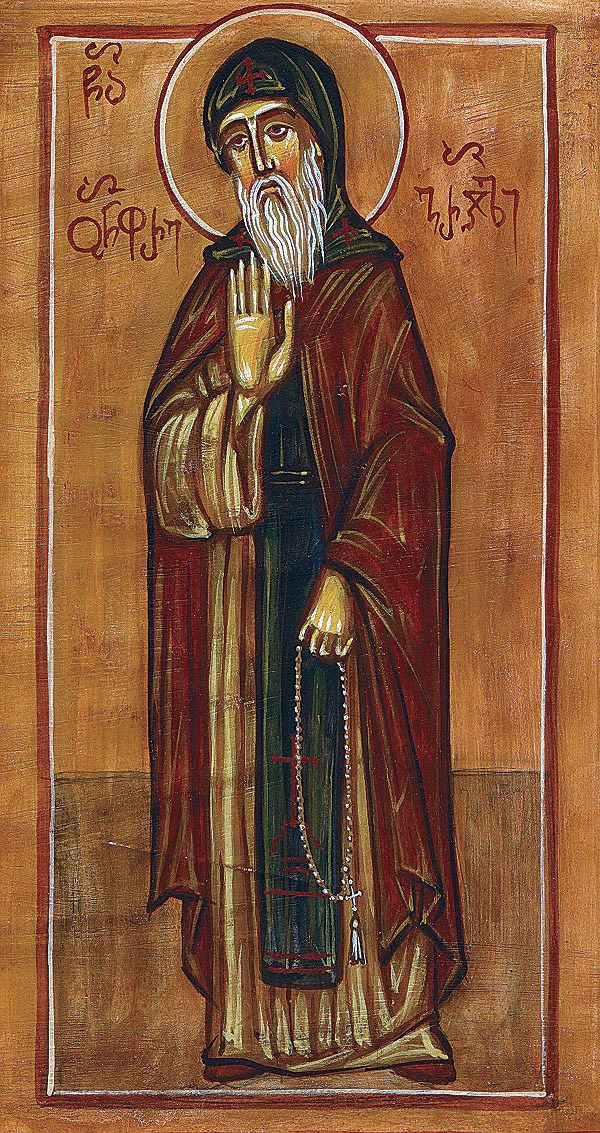
Saint Onuphrius of Gareji (Otar Machutadze in the world) lived and labored in the 18th century. He was a Karelian aristocrat famed for wealth, hospitality, and charity. Longing for the ascetic life, Otar wore a hair shirt under his distinguished raiment and unceasingly prayed to God for the strength to lead the monastic life. He revealed his will to his wife: “I thirst to turn from this world and draw nearer to Christ,” he said. “Therefore, I beg your forgiveness for all my transgressions, both voluntary and involuntary.” His faithful wife consented and permitted him to go in peace. Otar traveled with his two eldest sons to Tbilisi, blessed them, and bade them farewell for the last time. Then, he set off for the David-Gareji Monastery, led by the kindhearted superior Archimandrite Herman. Archimandrite Herman received Otar with great joy, and after a short time, he tonsured him with a monk named Onuphrius.
Blessed Onuphrius was a peaceful, humble and obedient man and a tireless ascetic. He would keep vigil through the night, and after the morning prayers he would go down to the ravine and continue to chant psalms, shedding tears over his past transgressions. He ate just one meal a day of bread and water, after the hour of Vespers. Once the Dagestanis attacked the David-Gareji Monastery, plundered the church, and took captive several monks including Onuphrius, the priests Maxime and Ioakime, and four deacons. Onuphrius was the oldest among them. The unbelievers planned to stab him to death, but the Lord protected him from their evil scheme. According to the will of the All-mercifulGod, Onuphrius was freed and returned to the monastery. The brotherhood was impoverished after the invasion, so Archimandrite Herman sent St. Onuphrius on a mission to solicit alms. It was difficult for St. Onuphrius to depart from the monastery, but he unquestioningly obeyed the will of his superior: the former aristocrat began to walk from door to door, begging for charity. At Tskhinvali in Samachablo St. Onuphrius attracted the attention of a crowd of people leading a young, demon-possessed man. The saint approached them and discovered that they were bringing the young man to a fortuneteller for help. With love and great boldness St. Onuphrius addressed the crowd, saying, “My children, such behavior is not fitting for Christian believers. Bring the young man to me!” The young man’s mother fell on her knees before him, begging for help, but St. Onuphrius raised her up and proclaimed: “I have come bearing earth from the grave of St. David of Gareji. This will help your son!” He dissolved a pinch of the earth in water and gave it to the young man to drink, and he was immediately healed. St. Onuphrius took with him his youngest son, John, and returned to the monastery with a great quantity of provisions. Once a certain Arab with a wounded eye came to the monastery seeking help. St. Onuphrius washed his eye in water from the holy spring of David-Gareji, and he was immediately healed. Later St. Onuphrius desired to be tonsured into the great schema. The superior was hesitant, and told Onuphrius to remain for twenty or thirty days at the grave of St. David praying and supplicating God to reveal His will. The saint remained there in prayer, and after thirty days God revealed to the abbot that Fr. Onuphrius was truly worthy of this honor. Then Schemamonk Onuphrius gave a vow of silence and began to sleep on a tattered mat. Under his clothing he wore a heavy chain, and he left his cell only to attend the divine services. Soon Blessed Onuphrius became so exhausted that he was no longer able to stand. The brothers begged him to lie on a bed and rest his head on a pillow, but the blessed Onuphrius opened his mouth for the first time since taking the vow of silence and said, “I vow to end my days on this mat.” St. Onuphrius endured his infirmities with thanksgiving and repeated the Jesus Prayer incessantly. When people came to receive his blessing, he would welcome them, saying, “Let me kiss the edge of your garments and wash your feet with my tears!” Sensing that the end of his days was approaching, St. Onuphrius partook of the Holy Gifts and, eighteen days later, on the Feast of Theophany, fell asleep in the Lord. St. Onuphrius was buried on the south side of the grave of St. David of Gareji, near the altar window.
© 2006 St. Herman of Alaska Brotherhood.


1 Corinthians 10:23-28
23 All things are lawful for me, but not all things are helpful; all things are lawful for me, but not all things edify. 24 Let no one seek his own, but each one the other's well-being. 25 Eat whatever is sold in the meat market, asking no questions for conscience' sake; 26 for "the earth is the LORD's, and all its fullness." 27 If any of those who do not believe invites you to dinner, and you desire to go, eat whatever is set before you, asking no question for conscience's sake. 28 But if anyone says to you, "This was offered to idols," do not eat it for the sake of the one who told you, and for conscience' sake; for "the earth is the LORD's, and all its fullness."
Luke 5:17-26
17 Now it happened on a certain day, as He was teaching, that there were Pharisees and teachers of the law sitting by, who had come out of every town of Galilee, Judea, and Jerusalem. And the power of the Lord was present to heal them. 18 Then behold, men brought on a bed a man who was paralyzed, whom they sought to bring in and lay before Him. 19 And when they could not find how they might bring him in, because of the crowd, they went up on the housetop and let him down with his bed through the tiling into the midst before Jesus. 20 When He saw their faith, He said to him, "Man, your sins are forgiven you." 21 And the scribes and the Pharisees began to reason, saying, "Who is this who speaks blasphemies? Who can forgive sins but God alone?" 22 But when Jesus perceived their thoughts, He answered and said to them, "Why are you reasoning in your hearts? 23 Which is easier, to say, 'Your sins are forgiven you,' or to say, 'Rise up and walk'? 24 But that you may know that the Son of Man has power on earth to forgive sins-He said to the man who was paralyzed, "I say to you, arise, take up your bed, and go to your house." 25 Immediately he rose up before them, took up what he had been lying on, and departed to his own house, glorifying God. 26 And they were all amazed, and they glorified God and were filled with fear, saying, "We have seen strange things today!"
#orthodoxy#orthodoxchristianity#easternorthodoxchurch#originofchristianity#spirituality#holyscriptures#gospel#bible#wisdom#faith#saint
6 notes
·
View notes
Text
The Icons of the Most Holy Theotokos of Pochaev
Reading from the Synaxarion:
The Icon of the Mother of God of Pochaev - Metropolitan Neophytus, a bishop belonging to the see of Constantinople, was traveling through Volhynia in Ukraine where he was given hospitality by a pious woman, Anna Goyskaya. The bishop gave this woman an icon of the holy Theotokos, which began to work miracles, including the healing of her blind brother. In 1597 the icon was given to the monks residing in Pochaev near the border of Galicia, where the Mother of God had appeared in 1340, leaving an imprint of her footprint in the rock, from which a stream gushed forth. In 1675 when the Lavra of Pochaev was besieged by the Moslem Turks, it was saved by the miraculous intervention of the Mother of God through her wonderworking icon. Even though the Lavra of Pochaev came into Uniate hands for over a century, miracles continued to be worked through the holy icon. Since its return to the Orthodox Catholic Church in 1831, the icon has been a grace-bestowing support for Orthodox Christians, especially those in western Ukraine and the Carpathian region.
Apolytikion of Icons of the Holy Theotokos of Pochaev in the Plagal of the First Tone
They that pray before thy holy icon, O sovereign Lady, are made worthy of healing, receive the gift of understanding of the true Faith, and repel the attacks of the Hagarenes; likewise for us who fall down before thee, do thou ask for forgiveness of our sins. Enlighten our hearts with devout purpose and raise thy prayer to thy Son for the salvation of our souls.
Kontakion of Icons of the Holy Theotokos of Pochaev in the First Tone
Thine icon of Pochaev, O Theotokos, hath been shown to be a source of healing and a confirmation of the Orthodox Faith. Therefore deliver us who flee to it from danger and temptation; preserve thy Lavra unharmed; strengthen Orthodoxy in the neighbouring lands; and loose thy suppliants from sins; for thou canst do whatsoever thou dost will.
Icon of the Mother of God
Reading from the Synaxarion:
The Icon of the Mother of God "Joy of All That Sorrow" - As with so many other icons of the Theotokos, wonderworking copies of this icon have been found throughout Orthodox Russia, each with its own history and moving collection of miracles. In this icon, the most holy Mother of God is depicted standing full stature sometimes with, sometimes without the Divine Child in her arms; she is surrounded by all manner of the sick and the suffering, to whom Angels of the Lord bear gifts of mercy, consolation, and suitable aid from the most holy Theotokos. The icon "Joy of all that Sorrow" was inspired by the hymn of the same name; see page 222 in Great Compline. Through one copy of this icon, the sister of Patriarch Joachim was healed at the end of the seventeenth century in Moscow, from which time the feast was established. Another copy of the icon was found in Saint Petersburg; on July 23, 1888, during the severe thunderstorm, lightning struck a chapel at a glass factory, burning the int erior walls of the church, but leaving the icon unsinged. From the violent disturbance of the air, the icon was knocked to the floor, the poor-box broke open, and twelve copper coins adhered to the icon in various places; afterwards many miracles were worked by the grace of the holy icon.
Apolytikion of Icon of the Mother of God in the Fourth Tone
To God's Birthgiver let us run now most earnestly, we sinners all and wretched ones, and fall prostrate in repentance, calling from the depths of our souls: Lady, come unto our aid, have compassion upon us; hasten thou, for we are lost in a throng of transgressions; turn not thy servants away with empty hands, for thee alone do we have as our only hope.
Kontakion of Icon of the Mother of God in the Plagal of the Second Tone
We have no other help, we have no other hope, but thee, O sovereign Lady; do thou help us. In thee do we hope, and of thee do we boast, for we are thy servants. Let us not be put to shame.
Epistle Reading
The Reading is from St. Paul's Letter to the Romans 14:9-18
Brethren, to this end Christ died and lived again, that he might be Lord both of the dead and of the living. Why do you pass judgment on your brother? Or you, why do you despise your brother? For we shall all stand before the judgment seat of God; for it is written. "As I live, says the Lord, every knee shall bow to me, and every tongue shall give praise to God." So each of us shall give account of himself to God. Then let us no more pass judgment on one another, but rather decide never to put a stumbling block or hindrance in the way of a brother. I know and am persuaded in the Lord Jesus that nothing is unclean in itself; but it is unclean for any one who thinks it unclean. If your brother is being injured by what you eat, you are no longer walking in love. Do not let what you eat cause the ruin of one for whom Christ died. So do not let your good be spoken of as evil. For the kingdom of God is not food and drink but righteousness and peace and joy in the Holy Spirit; he who thu s serves Christ is acceptable to God and approved by men.
Gospel Reading
The Reading is from the Gospel According to Matthew 12:14-16; 22-30
At that time, the Pharisees took counsel against Jesus, how to destroy him. Jesus, aware of this, withdrew from there. And many followed him, and he healed them all, and ordered them not to make him known.
Then a blind and dumb demoniac was brought to him, and he healed him, so that the dumb man spoke and saw. And all the people were amazed, and said, "Can this be the Son of David?" But when the Pharisees heard it they said, "It is only by Beelzebul, the prince of demons, that this man casts out demons." Knowing their thoughts, he said to them, "Every kingdom divided against itself is laid waste, and no city or house divided against itself will stand; and if Satan casts out Satan, he is divided against himself; how then will his kingdom stand? And if I cast out demons by Beelzebul, by whom do your sons cast them out? Therefore they shall be your judges. But if it is by the Spirit of God that I cast out demons, then the kingdom of God has come upon you. Or how can one enter a strong man's house and plunder his goods, unless he first binds the strong man? Then indeed he may plunder his house. He who is not with me is against me, and he who does not gather with me scatters."
0 notes
